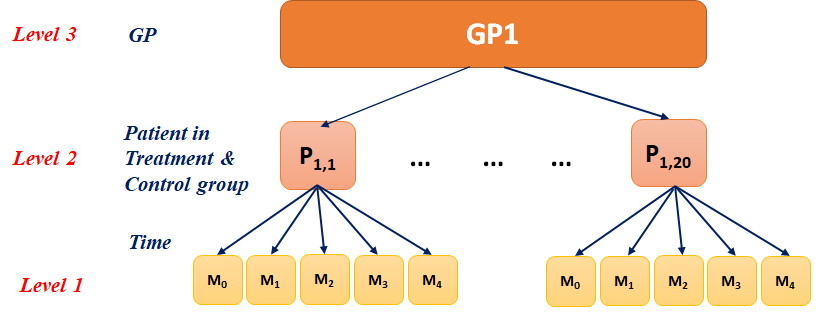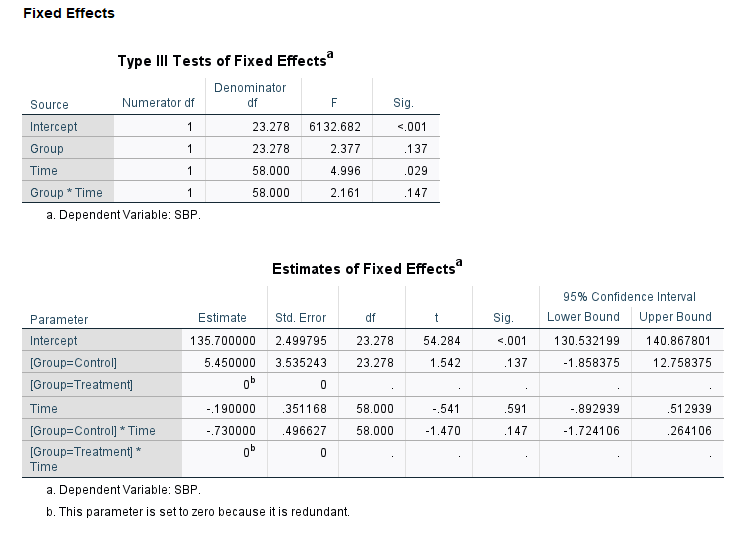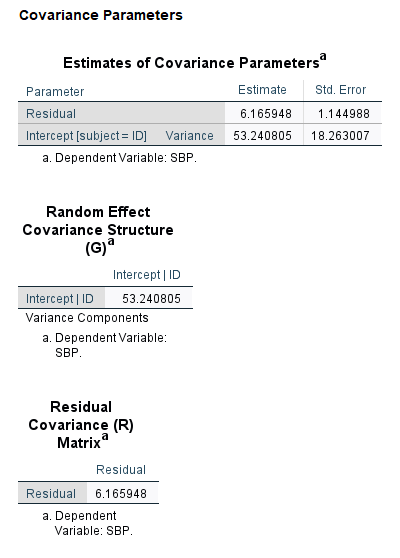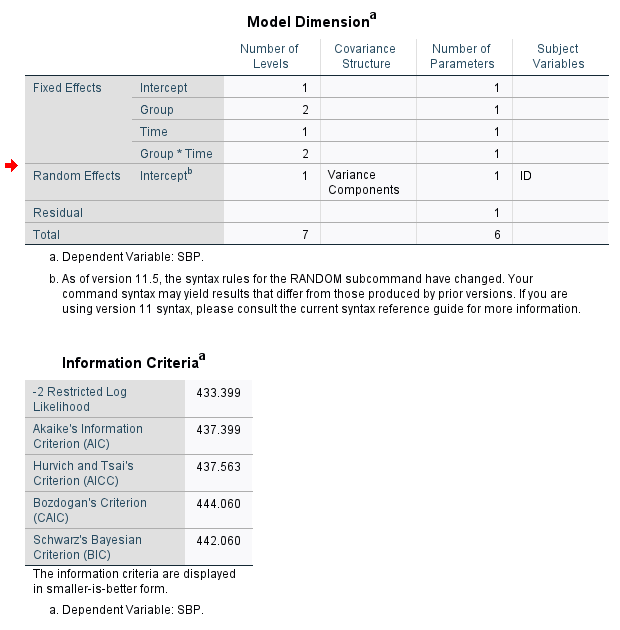10 Two Groups at Multiple Times
10.1 Reearch objective
- To identify the mean difference of SBP between the Treatment and Control groups and weekly changes in SBP
10.2 Data
We will now add further complexity to our problem where we wish to include both group and time
We wish to investigate the difference in SBP between Treatment and Control groups as well as dynamics of SBP from Weeks 1 to 4
The data comprised of those in the Treatment and Control groups at Weeks 1 to 4 for GP = 1 only
Note that from now onward we will use long type data with baseline SBP as one of the columns
The Time column includes the indicator of time in week while the SBP column shows the corresponding SBP value
Also note that we will consider the integer value of Time to capture the dynamics
Figure: A schematic representation of the data structure considered in this section

A snapshot of the data is presented here
10.3 Data Summary: Plot
10.4 Data Summary: Table
| Group | Time | N | Mean | SD |
|---|---|---|---|---|
| Control | 1 | 10 | 140.4 | 7.75 |
| Control | 2 | 10 | 139.0 | 8.71 |
| Control | 3 | 10 | 138.5 | 7.04 |
| Control | 4 | 10 | 137.5 | 8.13 |
| Treatment | 1 | 10 | 136.2 | 8.40 |
| Treatment | 2 | 10 | 134.0 | 7.01 |
| Treatment | 3 | 10 | 135.7 | 7.15 |
| Treatment | 4 | 10 | 135.0 | 7.26 |
10.5 Model options
Independent sample t-test between Treatment and Control groups at each time point and adjust the p-values
Calculate the area under the curve (AUC) of the response variable against time and fit an independent sample t-test between Treatment and Control groups
These approaches consider only part of data, therefore, may produce biased outcomes
Additionally, there are inherent problems of model fits for unbalanced and missing data
10.6 Model equation
\[y_{ij} = \beta_0 + \beta_1 \times GROUP_{i} + \beta_2 \times TIME_{ij} + u_{0i} + e_{ij}\]
Here:
\(y_{ij}\) = the SBP value of the i-th patient (\(i = 1, ..., 20\)) at the j-th time point (\(j = 1, 2, 3, 4\))
\(\beta_0\) = the intercept at the reference level of time
\(\beta_1\) = the effect of the treatment group; \(Group = {Treatment, Control}\)
\(\beta_2\) = the effect of j-th time \(Time = {1, 2, 3, 4}\)
\(u_{0i}\) = the effect of i-th patient
\(e_{ij}\) = the random error
Assumption:
\(u_{0i} \sim N(0, \sigma_P^2)\)
\(e_{ij} \sim N(0, \sigma_e^2)\)
Model equation: extension
Model intercept consists of two components: fixed part and random part:
\[Intercept: b_{0i} = \beta_0 + u_{0i}\]
10.7 Hypothesis
Group
\[Null \space hypothesis, H_0: \beta_1 = 0\]
\[Alternative \space hypothesis, H_1: \beta_1 \ne 0\]
Time
\[Null \space hypothesis, H_0: \beta_2 = 0\]
\[Alternative \space hypothesis, H_1: \beta_2 \ne 0\]
10.9 SPSS Syntax
MIXED SBP BY Group WITH Time
/CRITERIA = DFMETHOD(SATTERTHWAITE) CIN(95) MXITER(100) MXSTEP(10)
SCORING(1) SINGULAR(0.000000000001) HCONVERGE(0, ABSOLUTE)
LCONVERGE(0, ABSOLUTE) PCONVERGE(0.000001, ABSOLUTE)
/FIXED = Group Time Group*Time | SSTYPE(3)
/METHOD = REML
/PRINT = G R SOLUTION
/RANDOM = INTERCEPT | SUBJECT(ID) COVTYPE(VC).10.10 Summary
The summary of model outputs from the linear mixed model considering the patient as a random effect.

10.11 Estimates of variance

10.12 Model performance
Several statistics can be used to check the performance of the model.

10.13 Intraclass correlation (ICC)
The intraclass correlation is estimated as between patient variability to the total variability.
\[ICC = \frac{\sigma_P^2}{\sigma_P^2 + \sigma_e^2}\]
We can calcualate the ICC using the estimates of \(\sigma^2_P\) and \(\sigma^2_e\) as:
\[ICC = \frac{53.2408}{53.2408 + 6.1659} = 0.8962\]
10.14 Explanation
This model is still incomplete since we have not explored several other predictors measured at the baseline that may influence the SBP at subsequent time points. We will check the approaches to the model selection in the next section and obtain the estimated mean difference between Treatment and Control groups after adjusting for other predictor variables.

